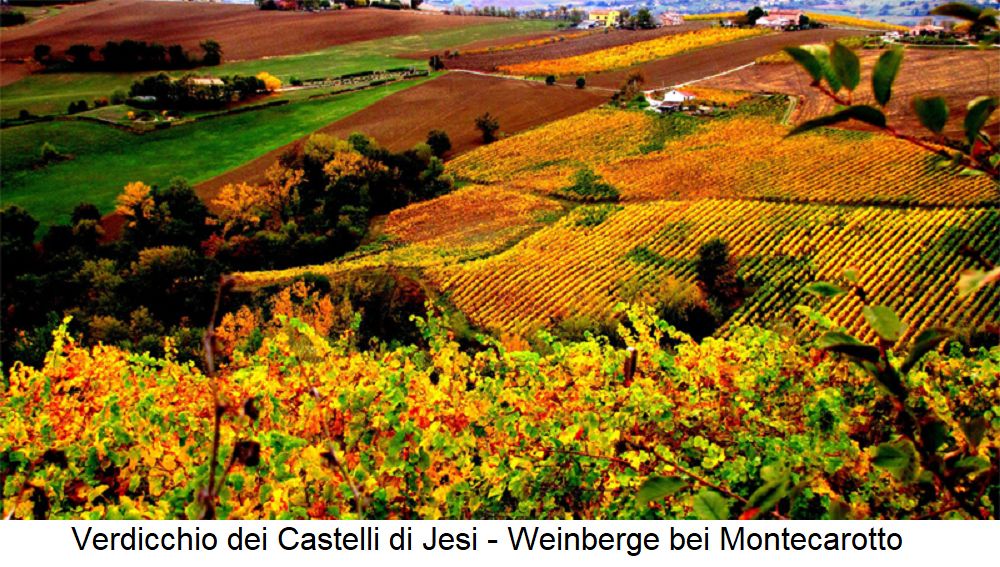DOC area for white wines in the Italian Marche region. The zone includes about 3.000 hectares of vineyards in the municipalities of Arcevia, Barbara, Belvedere Ostrense, Castelplanio, Corinaldo, Castelbellino, Cupramontana, Maiolati Spontini, Mergo, Montecarotto, Monte Roberto, Morro d'Alba, Ostra, Poggio San Marcello, Rosora, San Marcello, San Paolo di Jesi, Senigallia, Serra de' Conti, Serra San Quirico and Staffolo in the province of Ancona, and Apiro, Cingoli and Poggio San Vicino in the province of Macerata. The oldest production zone includes the area to the left of the Misa river, and the municipalities of Ostra and Senigallia. These may bear the addition Classico on the label. About 100 vineyards or Vigna may also be mentioned.

In 1950, the leading winery Fazi-Battaglia introduced the significant green amphora with the scroll on its neck, which (along with fishing nets) became an indispensable part of the Italian restaurant inventory and made the wine famous outside Italy (today it is bottled in this form only as a tourist attraction). The green-yellow wine is made from at least 85% Verdicchio(Verdicchio Bianco), a maximum of 15% can be other approved varieties. There is also a Spumante, Passito, Classico and Classico Superiore. The Riserva version was classified as DOCG in 2010 under the new designation Castelli di Jesi Verdicchio Riserva (or Castelli di Jesi Verdicchio Riserva Classico). There is a much smaller Verdicchio DOC zone in the Marche region called Verdicchio di Matelica.
In September 2020, the regional consortium IMT (Istituto marchigiano di tutela vini) decided that the wines of the two Verdicchio appellations Verdicchio dei Castelli di Jesi DOC and Verdicchio di Matelica DOC (as riserva each DOCG) will receive the state label. From a legislative point of view, their use is only prescribed for DOCG wines and is voluntary for DOC wines. The banderoles on the bottles, which are provided with alphanumeric codes, are intended to increase their traceability and efficiency in the fight against label fraud.
Picture: By Mauro Cesarini - Own work, CC BY-SA 3.0, Link
Voices of our members

The glossary is a monumental achievement and one of the most important contributions to wine knowledge. Of all the encyclopaedias I use on the subject of wine, it is by far the most important. That was the case ten years ago and it hasn't changed since.
Andreas Essl
Autor, Modena